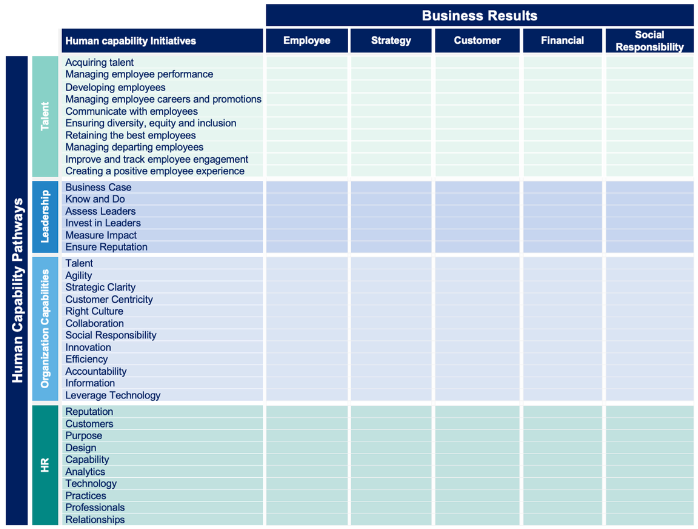According to ifo President Clemens Fuest, Europe is currently falling behind economically and technologically. Due to poor framework conditions, many companies are relocating parts of their operations and resources to other countries and are cutting jobs in their home markets.
For many HR managers, there is currently only one message: cut costs. After all, personnel costs represent the largest cost item in most companies. Suitable measures before layoffs are announced include reducing overtime and flexitime credits, short-time work or cutting voluntary social benefits.
Does this mean that HR’s “toolbox” is exhausted? Is HR once again the vicarious agent for surviving lean periods in companies with cost-cutting programs? Or should companies, when labor markets become slack, focus on employee retention and preventing burnout rather than cost-cutting?
Employees are not just a cost factor, they are essentially the only value-adding factor! Both factors are important in a world where companies are struggling with economic uncertainty, rapid technological change and upheavals in working models. It is therefore a matter of finding the right balance or mastering the balancing act between cost reduction on the one hand and growth through investment on the other.
Measures to increase returns
My own experience and various studies show that companies that place talent at the heart of their business strategy achieve higher total returns for their shareholders than their competitors. For me, five measures stand out:
- Establishing competency-based strategic workforce planning,
- creating differentiated recruitment by workforce segment,
- investing in training and continuing education,
- establishing a performance-oriented culture, and
- improving the HR operating model.
Join me for a deeper dive!
Establishing competency-based strategic workforce planning
More and more companies are starting to clarify the roles and skills that are crucial to executing the business strategy. Once the target picture has been defined and compared to the current situation, the skills gaps can be displayed in a heat map and closed through targeted development programs. Research shows that people who achieve top performance in highly critical areas are up to 800 percent more productive than average employees in the same position.
Creating differentiated recruitment by workforce segment
Companies are piloting innovative technologies and data-driven approaches to compete more successfully for the best talent. Traditional recruitment methods are no longer sufficient to meet the changing demands of the labor market.
I am currently experiencing how the entire candidate journey in companies is being scrutinized and digitized. The aim is to gather more information about relevant personas, formulate better job requirements and match candidates with skill pools. Analyses can help to find out at which point applicants drop out in order to optimize the journey through personalized content and seamless onboarding.
In the article “Is HR succeeding in the balancing act? (1/2)”, I discussed current recruitment strategies. Measures derived from this must be evaluated; also with a view to productivity: time to productivity.
Investing in training and continuing education
Traditional role-based learning programs are increasingly being questioned. Instead, tailored, skills-based learning programs are being developed and evaluated along the knowledge gaps already outlined; for example, with the help of the Bontis model, which I have already cited several times. BCG has developed a three-stage approach in several projects that helps companies to better evaluate the “return on learning investment“. With ROLI, companies can:
- determine the business results or effects they want to achieve, such as productivity or employee retention, in advance,
- define the key figures and leading indicators that they will use to evaluate the program in terms of the expected effects, and
- determine whether this impact has been achieved by comparing target and actual results.
When companies align their culture with continuing education, employees tend to feel more productive, adaptable and valued, which has a positive long-term impact on employee attraction and retention.
Establishing a performance-oriented culture
As outlined in several articles, I advocate for a strong performance culture with regard to employees, teams and the entire company.
Research on organizational health shows how strong the links are between management practices and a stronger performance culture. Effective leaders ensure better organizational health, which in turn delivers three times higher shareholder returns than unhealthy organizations, regardless of industry.
A McKinsey study published in April this year found:
- Building a strong performance culture involves two streams: instituting clear accountability mechanisms and improving employee experience. The goal is to create an enabling, inclusive culture that also has a performance edge.
- Organizations can define the behaviors that lead to strong business performance and communicate them clearly so that employees know what they look like in practice.
- High-performance cultures remove barriers to change and peel away layers of bureaucracy. These include inefficiency factors that increase disengagement and attrition, such as slow decision making, pointless meetings, and other impediments to getting things done. Companies can increase the productivity of their talent by streamlining decision rights and increasing decision velocity.
Improving the HR operating model
Finally, on this corporate blog you will find explanations on the so-called Target Operating Model (TOM) – also with regard to HR; as well as on the transformation towards such a target model. At the heart of this transformation is the contribution to value creation, the return – often measured as Human Capital Return on Investment (HC RoI). Here I have summarized some findings on HC RoI and the HR business and operating model.
I would like to emphasize three points:
- The structural design of an operating model comes pretty much at the end of the transformation, not at the beginning! It starts with the development of an HR strategy that is linked to the corporate strategy. An outside-in approach should be taken here, starting with the needs of the stakeholders and then determines the impact within the company on meeting these needs.
- In order to justice to the increasingly strategic role, this operating model must remain flexible and adapt to business policy changes.
- The HR department should develop a data culture and expand its data and people analytics capabilities as part of this. Added value is not generated by columns of numbers, but by insights from data that flow into further strategy work.
So much for the five measures that can transform a company’s talent system, create a performance culture and improve the employee experience at the same time. The goal of these measures is to sustainably increase the company’s return on investment.
Integrated framework supports convergence
Basic methods such as 4DX, Hoshin Kanri and BSC, HR core strategy approach and DEDIND model are right and good. In relation to the five measures mentioned above and a focus on value-added solutions, a convergence framework with four areas is helpful in HR. Dave Ulrich writes the following about this:
Every discipline, to become a science, offers such protocols or integrated frameworks that organize divergent options into patterns. My doctoral training with Bill McKelvey in organizational systematics taught me about the discipline of integrated frameworks turns complexity into simplicity, focuses attention, provides conceptual clarity, sets priorities, and offers a blueprint for progress. Mental models that create patterns or frames for organizing thinking are critical in the age of technology and turmoil. Notice how the disarray of HR initiatives in figure 2 indicates that HR as a field may not yet have such an integrated framework.
In a February 2024 publication on the Human Capability Framework (HCF), Dave Ulrich and Harrison James present three key findings:
- Investing in human capability must be a business, not an HR agenda. Discussions about human capabilities must start with the essential question: “How can we impact stakeholder outcomes by investing in human capabilities?”
- Organizations must have an integrated and non-fragmented framework for both stakeholder outcomes and human capability initiatives to avoid the trap of panaceas and quick fixes.
- Implementing disciplined methods of prioritization is critical, rather than focusing on what “my manager, advisor, employee or cousin” wants.
Now, using the HCF – shown below with 38 possible human capability initiatives and five stakeholders – results in a grid of 190 opportunities:
The strategic HR portfolio and the strategic HR roadmap are then created using SWOT, Gap 1 (activities) and Gap 2 (resources) analysis and in conjunction with the opportunity score (status * impact * variance).
Value-added consulting therefore shifts the focus from describing possible measures to prescribing value-added solutions in order to achieve corporate goals. While benchmarking and best practices compare measures and initiatives, investments that offer added value to all those involved are prioritized here.
Conclusion
A positive performance culture correlates with the financial success of a company. By developing their personal skills and improving socially and methodically, employees make a significant contribution to increasing company performance. A positive performance culture also has a positive impact on employee retention and satisfaction and has been proven to result in a reduction in sick days.
The integration of cultural and other measures into a so-called Human Capability Framework aims to categorize the countless, strategy-oriented HR initiatives and to keep an eye on the added value for stakeholders. The integration of GenAI should take place along the four areas of this framework.



Leave A Comment